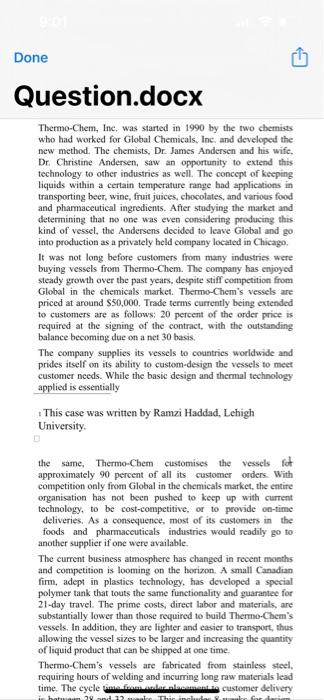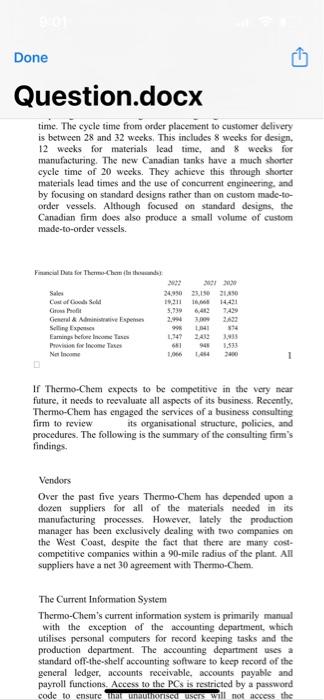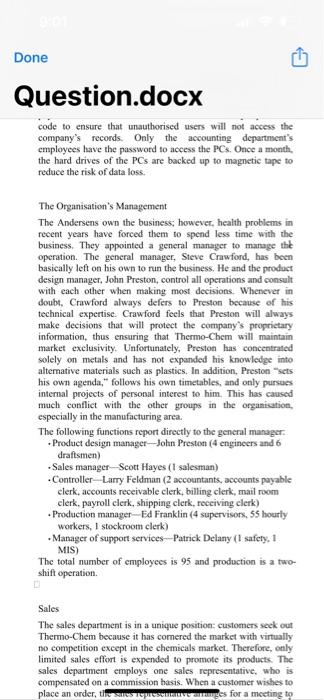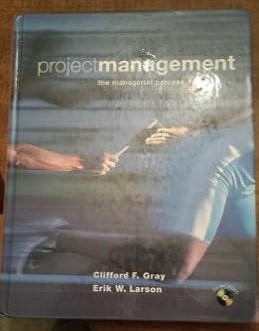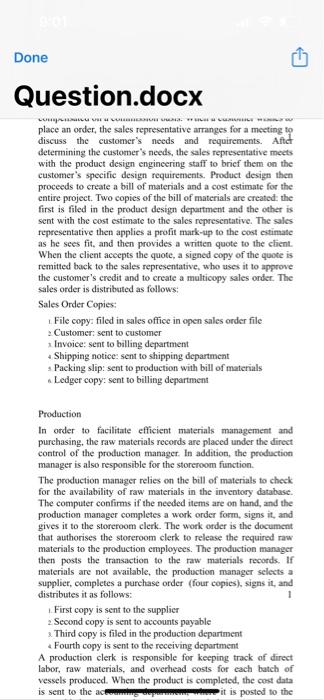
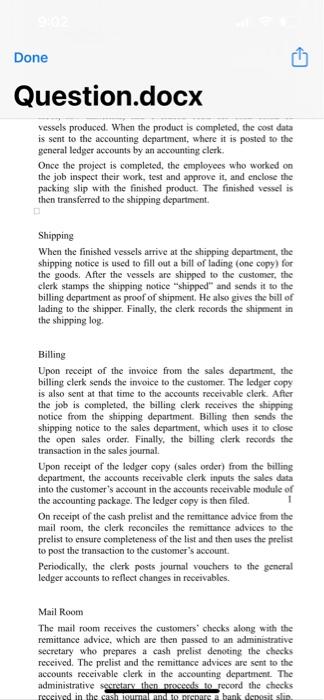

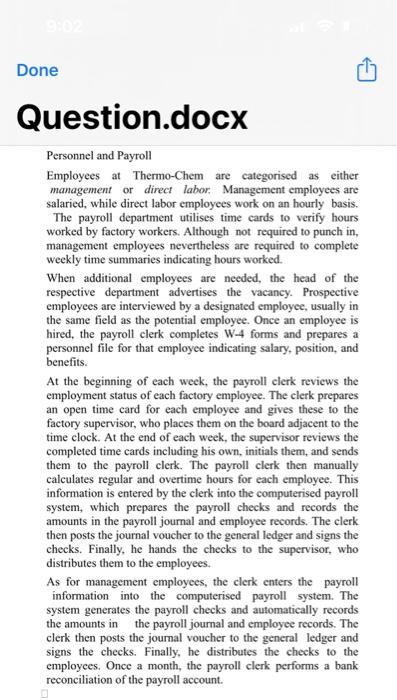
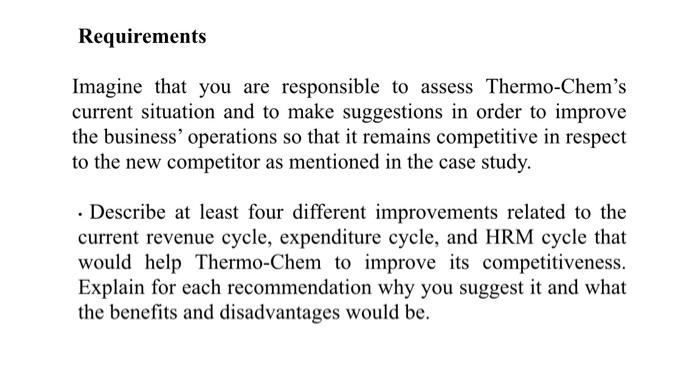
THERMO-CHEM, INC.I Thermo-Chem, Inc, manufactures a specialised pressure vessel designed to keep chemicals heated to at least 190 degrees Fahrenheit while in transit to the point of use. The vessels are guaranteed to keep the chemicals at this temperature and in a liquid state for at least 21 days, thus allowing the chemicals to be transported over long distances. The high temperature is required for certain chemicals that must be transported in a liquid state or they will solidify in the container, forcing additional procedures and equipment for unloading the vessel. As an example, the chemical toluene, which is used in making urethane foam and sheet plastics, is in a liquid state above 190 degrees Fahrenheit. Below this temperature, toluene solidifies and must be returned to the liquid state to be removed from its container. The traditional method of carrying this chemical to a customer's site is to transport it in a Teflon-lined stainless steel container. The chemical turns quickly into its solid state once in the vessel and remains in that state until it is delivered to the customer's site. Once there, steam is circulated through heating coils that are wrapped around the vessel. This procedure, called heat soaking, requires the steam to be applied for three days to re-liquefy the chemical. A steam source must be readily available at or near the user's site, requiring additional investment in equipment. Once in a liquid state, the unloading process requires six hours. In the early 1980s, Global Chemicals, Inc. developed a new method that improved costs and reduced cycle time related to delivering toluene to user sites. The new design uses a thinwalled stainless steel inner vessel that is wrapped in special composite insulating materials and encased inside a vacuum chamber. Both the insulation materials and the vacuum space provide insulating properties, which maintain the chemical in its liquid state during transport. In addition, internal steam heating coils are built into the vessel to allow for heat soaking should the vessel be in transit for longer than 21 days or should it fail. The advantages of the new design include saving 3 days in delivery time through the elimination of the heat soaking process, unloading the vessel in one hour instead of the traditional six hours, and eliminating the need to provide equipment for the steam heating step. Thermo-Chem, Inc. was started in 1990 by the two chemists who had worked for Global Chemicals, Inc. and developed the new method. The chemists, Dr. James Andersen and his wife, Thermo-Chem, Ine, was started in 1990 by the two chemists who had worked for Global Chemicals, Inc. and developed the new method. The chemists, De. James Andersen and his wife, Dr. Christine Andersen, saw an opportunity to extend this technology to other industries as well. The concept of keeping liquids within a certain temperature range had applications in transporting beer, wine, fruit juices, chocolates, and varioes food and pharmaceutical ingredients. After studying the market and determining that no one was even considering producing this kind of vessel, the Andersens decided to leave Global and go into production as a privately beld company located in Chicago. It was not long before customers from many industries were buying vessels from Thermo-Chem. The company has enjoyed steady growth over the past years, despite stiff competition from Global in the chemicals market. Thermo-Chem's vessels are priced at around $50,000. Trade terms currently being extended to customers are as follows: 20 percent of the order price is required at the signing of the contract, with the outstanding balance becoming due on a net 30 basis. The company supplies its vessels to countries worldwide and prides itself on its ability to custom-design the versels to meet customer needs. While the basic design and thermal technology applied is essentially This case was written by Ramzi Haddad, Lehigh University. the same, Thermo-Chem customises the vessels fot approximately 90 percent of all its customer orders. With competition only from Global in the chemicals market, the entire organisation has not been pushed to keep up with current technology, to be cost-competitive, of to provide on-time deliveries. As a consequence, most of its customers in the foods and pharmaceuticals industries would readily go to another supplier if one were available. The current business atmosphere has changed in recent months and competition is looming on the borizon. A small Canadian firm, adept in plastics technology, has developed a special polymer tank that touts the same functionality and guarantee for 21-day travel. The prime costs, direct labor and materials, are substantially lower than those required to build Thermo-Chem's vessels. In addition, they are lighter and easier to transport, thus allowing the vessel sizes to be larger and increasing the quantity of liquid product that can be shipped at one time. Thermo-Chem's vessels are fabricated from stainless steel, requiring hours of welding and incurring long raw materials lead time. The cycle uine foom wod as-alowement customer delivery time. The cycle time from order placement to customer delivery is between 28 and 32 weeks, This includes 8 weeks for design, 12 weeks for materials lead time, and 8 weeks for manufacturing. The new Canadian tanks have a much shorter cycle time of 20 weeks. They achieve this through shorter materials lead times and the use of concurrent engineering, and by focusing on standard designs rather than on custom made-toorder vessels. Although focused on standard designs, the Canadian firm does also produce a small volume of custom made-to-order vessels. If Thermo-Chem expects to be competitive in the very near future, it needs to reevaluate all aspects of its business. Recently, Thermo-Chem has engaged the services of a business consulting firm to review its organisational structure, policies, and procedures. The following is the summary of the consulting firm's findings. Vendors Over the past five years Thermo-Chem has depended upon a dozen suppliers for all of the materials needed in its manufacturing processes. However, lately the production manager has been exclusively dealing with two companies on the West Coast, despite the fact that there are many costcompetitive companies within a 90 -mile radius of the plant. AII suppliers have a net 30 agreement with Thermo-Chem. The Current Information System Thermo-Chem's current information system is primarily manual with the exception of the accounting department, which utilises personal computers for record keeping tasks and the production department. The accounting department uses a standard off-the-shelf accounting software to keep record of the general ledger, accounts receivable, accounts payable and payroll functions. Access to the PCs is restricted by a password code to ensure That han code to ensure that unauthorised users will not access the company's records. Only the accounting departincat's cmployees have the password to aceess the PCs. Once a month. the hard drives of the PCs are backed up to magnetic tape to reduce the risk of data loss. The Organisation's Management The Andersens own the business, however, health problems in recent years have forced them to spend less time with the business. They appointed a general manager to manage the operation. The general manager, Steve Crawford, has been basically left on his own to run the business. He and the prodoct design manager, John Preston, control all operations and consult with each other when making most decisions. Whenever in doubt, Crawford always defers to Preston because of his technical expertise. Crawford feels that Preston will always make decisions that will protect the company's proprictary information, thus ensuring that 'Thermo-Chem will maintain market exclusivity. Unfortunately, Prestoa has concentrafed solely on metals and has not expanded his knowledge into alternative materials such as plastics. In addition, Preston "scts his own agenda, H follows his own timetables, and only pursucs internal projects of personal interest to him. This has caused much conflict with the other groups in the organisation, especially in the manufacturing area. The following functions report directly to the general manager: - Product design manager-John Preston (4 engineers and 6 draftsmen) - Sales manager-Scott Hayes ( 1 salesman) - Controller-Larry Feldman (2 accountants, accounts payable elerk, accounts receivable clerk, billing clerk, mail room clerk, payroll clerk, shipping clerk, recciving clerk) - Production manager-Ed Franklin (4 supervisors, 55 hourly workers, I stockroom clerk) - Manager of support services-Patrick. Delany ( 1 safefy, 1 M1S) The total number of employees is 95 and production is a twoshift operation. Sales The sales department is in a unique position: customers seck out Thermo-Chem because it has comered the market with virtually no competition execpt in the chemicals market. Therefore, only limited sales effort is expended to promote its products. The sales department employs one sales representative, who is compensated on a commission hasis. When a customer wishes to place an order, thessares repuesernanveramanges for a mecting to place an order, the sales representative arranges for a meeting to discuss the customer's needs and requirements. Aftct determining the customer's needs, the sales representative mects with the product design engineering staff to brief them on the customer's specific design requiretnents. Product design then proceeds to create a bill of materials and a cost estimate for the catire project. Two copies of the bill of materials are created: the first is filed in the product design department and the other is sent with the cost estimate to the sales representative. The sales representative then applies a profit mark-up to the cost estimate as be sees fit, and then provides a written quote to the client. When the client accepts the quote, a signed copy of the quote is remitted back to the sales representative, who uses it to approve the customer's credit and to create a multicopy sales order. The sales order is distributed as follows: Sales Order Copies: 1. File copyz filed in sales office in open sales order file 2 Customer: sent to customer a Invoice: sent to billing department 4 Shipping notice: sent to shipping department s Packing slip: sent to production with bill of materials a Ledger copy: sent to billing department Production In order to facilitate efficient materials management and purchasing, the raw materials records are placed under the direct control of the production manager. In addition, the production manager is also responsible for the storeroom function. The production manager relies on the bill of materials to check for the availability of raw materials in the inventory database. The computer confirms if the needed items are on hand, and the production manager completes a work order form, signs it, and gives it to the storeroom clerk. The work order is the document that authorises the storeroom clerk to release the required raw materials to the production cmployecs. The production manager then posts the transaction to the raw materials records. If materials are not available, the production manager selects a supplier, completes a purchase order (four copies), signs it, and distributes it as follows: 1. First copy is sent to the supplier 2 Second copy is sent to accounts payable 3. Third copy is filed in the production department 4 Fourth copy is sent to the receiving department A production clerk is responsible for keeping track of direct labor, raw materials, and overhead costs for each batch of vessels produced. When the product is completed, the cost data vessels produced. When the product is completed, the cost data is sent to the accounting department, where it is posted to the general ledger accounts by an accounting clerk. Once the project is completed, the employees who worked on the job inspect their work, test and approve it, and enclose the packing slip with the finished product. The finished vessel is then transferred to the shipping department. Shipping When the finished vessels arrive at the shipping department, the shipping notice is used to fill out a bill of lading (one copy) for the goods. After the vessels are shipped to the customer, the clerk stamps the shipping notice "shipped" and sends it to the billing department as proof of shipment. He also gives the bill of lading to the shipper. Finally, the clerk records the shipment in the shipping log. Billing Upon receipt of the invoice from the sales department, the billing clerk sends the invoice to the customer. The ledger copy is also sent at that time to the accounts receivable clerk. After the job is completed, the billing clerk receives the shipping notice from the shipping department. Billing then sends the shipping notice to the sales department, which uses it to close the open sales order. Finally, the billing clerk records the transaction in the sales journal. Upon receipt of the ledger copy (sales order) from the billing department, the accounts receivable clerk inputs the sales data into the customer's accoant in the accounts receivable module of the accounting package. The ledger copy is then filed. On receipt of the cash prelist and the remittance advice from the mail room, the clerk reconciles the remittance advices to the prelist to ensure completeness of the list and then uses the prelist to post the transaction to the customer's account. Periodically, the clerk posts journal vouchers to the general ledger accounts to reflect changes in receivables. Mail Room The mail room receives the customers' checks along with the remittance advice, which are then passed to an administrative secretary who prepares a cash prelist denoting the checks received. The prelist and the remittance advices are sent to the accounts receivable clerk in the accounting department. The administrative secretary then mroceects to record the checks received. The prelist and the remittance advices are sent to the aceounts receivable clerk in the accounting department. The administrative secretary then proceeds to record the checks received in the cash joumal and to prepare a bank deposit slip. Checks are usually deposited in the bank at the close of each week. Once a month, the administrative secretary performs a bank reconciliation. Periodically, the administrative secretary prepares a journal voucher and sends it to the accounts receivable clerk for posting to the general ledger account. Receiving Department All goods received are first inspected and counted by the receiving elerks. Upon completion of the inspection and the count, a clerk prepares a receiving report indicating both the quantity and the condition of the inventory received. This report is then reconciled to the purchase order to ensure exact quantity and conformity of the goods. Copies of the receiving report are distributed as follows: 1. First copy is filed in the receiving department 2. Second copy accompanies the goods to the warchouse . Third copy is sent to accounts payable 4 Fourth copy is sent to the production manager and serves as basis to update inventory records Accounts Payable Clerk Upon receipt of the invoice from the vendor, the accounts payable clerk retrieves copies of the receiving report and the purchase order from the pending file and reconciles them to the invoice. He then records the transaction in the manual purchases journal and posts it to the vendor's account in the computerbased aceounts payable subsidiary ledger to reflect the liability. After recording the liability, the clerk files the invoice along with its supporting documents in the accounts payable open file according to due date. Finally, the clerk posts a journal voucher to the computer-based general ledger accounts. When the invoiee is due, the aceounts payable clerk dcbits the vendor's account in the accounts payable subsidiary ledger, prepares a computer-generated check for the invoice amount, and records the check number and amount in the cash disbursements journal. Finally, the clerk signs the check and mails it to the vendor. Periodically, the clerk summarises the entries to the cash disbursements journal and posts joumal voucbers to the general ledger accounts. Personnel and Payroll Employees at Thermo-Chem are categorised as either management or direct labor. Management employees are salaried, while direct labor employees work on an hourly basis. The payroll department utilises time cards to verify hours worked by factory workers. Although not required to punch in, management employees nevertheless are required to complete weekly time summaries indicating hours worked. When additional employees are needed, the head of the respective department advertises the vacancy. Prospective employees are interviewed by a designated employee, usually in the same field as the potential employee. Once an employee is hired, the payroll clerk completes W4 forms and prepares a personnel file for that employee indicating salary, position, and benefits. At the beginning of each week, the payroll clerk reviews the employment status of each factory employee. The clerk prepares an open time card for each employee and gives these to the factory supervisor, who places them on the board adjacent to the time clock. At the end of each week, the supervisor reviews the completed time cards including his own, initials them, and sends them to the payroll clerk. The payroll clerk then manually calculates regular and overtime hours for each employee. This information is entered by the clerk into the computerised payroll system, which prepares the payroll checks and records the amounts in the payroll journal and employee records. The clerk then posts the journal voucher to the general ledger and signs the checks. Finally, he hands the checks to the supervisor, who distributes them to the employees. As for management employees, the clerk enters the payroll information into the computerised payroll system. The system generates the payroll checks and automatically records the amounts in the payroll journal and employee records. The clerk then posts the journal voucher to the general ledger and signs the checks. Finally, he distributes the checks to the employees. Once a month, the payroll clerk performs a bank reconciliation of the payroll account. Requirements Imagine that you are responsible to assess Thermo-Chem's current situation and to make suggestions in order to improve the business' operations so that it remains competitive in respect to the new competitor as mentioned in the case study. - Describe at least four different improvements related to the current revenue cycle, expenditure cycle, and HRM cycle that would help Thermo-Chem to improve its competitiveness. Explain for each recommendation why you suggest it and what the benefits and disadvantages would be

